Yibo Hu
The Influence of Text Variation on User Engagement in Cross-Platform Content Sharing
Apr 26, 2025Abstract:In today's cross-platform social media landscape, understanding factors that drive engagement for multimodal content, especially text paired with visuals, remains complex. This study investigates how rewriting Reddit post titles adapted from YouTube video titles affects user engagement. First, we build and analyze a large dataset of Reddit posts sharing YouTube videos, revealing that 21% of post titles are minimally modified. Statistical analysis demonstrates that title rewrites measurably improve engagement. Second, we design a controlled, multi-phase experiment to rigorously isolate the effects of textual variations by neutralizing confounding factors like video popularity, timing, and community norms. Comprehensive statistical tests reveal that effective title rewrites tend to feature emotional resonance, lexical richness, and alignment with community-specific norms. Lastly, pairwise ranking prediction experiments using a fine-tuned BERT classifier achieves 74% accuracy, significantly outperforming near-random baselines, including GPT-4o. These results validate that our controlled dataset effectively minimizes confounding effects, allowing advanced models to both learn and demonstrate the impact of textual features on engagement. By bridging quantitative rigor with qualitative insights, this study uncovers engagement dynamics and offers a robust framework for future cross-platform, multimodal content strategies.
Ensuring Force Safety in Vision-Guided Robotic Manipulation via Implicit Tactile Calibration
Dec 13, 2024Abstract:In dynamic environments, robots often encounter constrained movement trajectories when manipulating objects with specific properties, such as doors. Therefore, applying the appropriate force is crucial to prevent damage to both the robots and the objects. However, current vision-guided robot state generation methods often falter in this regard, as they lack the integration of tactile perception. To tackle this issue, this paper introduces a novel state diffusion framework termed SafeDiff. It generates a prospective state sequence from the current robot state and visual context observation while incorporating real-time tactile feedback to refine the sequence. As far as we know, this is the first study specifically focused on ensuring force safety in robotic manipulation. It significantly enhances the rationality of state planning, and the safe action trajectory is derived from inverse dynamics based on this refined planning. In practice, unlike previous approaches that concatenate visual and tactile data to generate future robot state sequences, our method employs tactile data as a calibration signal to adjust the robot's state within the state space implicitly. Additionally, we've developed a large-scale simulation dataset called SafeDoorManip50k, offering extensive multimodal data to train and evaluate the proposed method. Extensive experiments show that our visual-tactile model substantially mitigates the risk of harmful forces in the door opening, across both simulated and real-world settings.
ROSE: Revolutionizing Open-Set Dense Segmentation with Patch-Wise Perceptual Large Multimodal Model
Nov 29, 2024Abstract:Advances in CLIP and large multimodal models (LMMs) have enabled open-vocabulary and free-text segmentation, yet existing models still require predefined category prompts, limiting free-form category self-generation. Most segmentation LMMs also remain confined to sparse predictions, restricting their applicability in open-set environments. In contrast, we propose ROSE, a Revolutionary Open-set dense SEgmentation LMM, which enables dense mask prediction and open-category generation through patch-wise perception. Our method treats each image patch as an independent region of interest candidate, enabling the model to predict both dense and sparse masks simultaneously. Additionally, a newly designed instruction-response paradigm takes full advantage of the generation and generalization capabilities of LMMs, achieving category prediction independent of closed-set constraints or predefined categories. To further enhance mask detail and category precision, we introduce a conversation-based refinement paradigm, integrating the prediction result from previous step with textual prompt for revision. Extensive experiments demonstrate that ROSE achieves competitive performance across various segmentation tasks in a unified framework. Code will be released.
C${^2}$RL: Content and Context Representation Learning for Gloss-free Sign Language Translation and Retrieval
Aug 19, 2024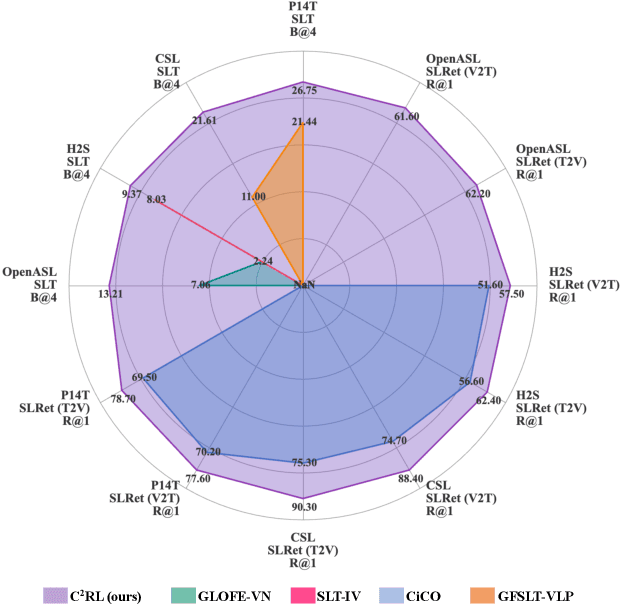
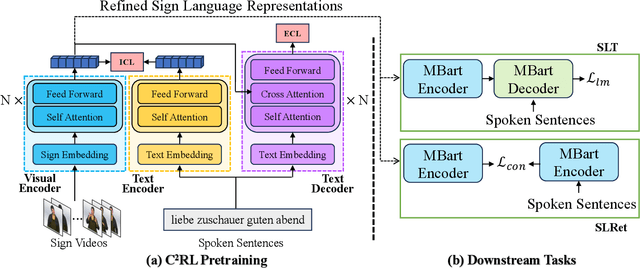
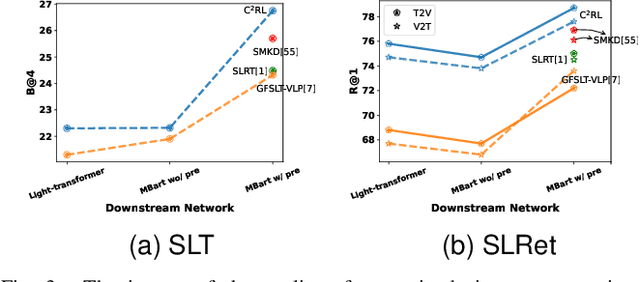

Abstract:Sign Language Representation Learning (SLRL) is crucial for a range of sign language-related downstream tasks such as Sign Language Translation (SLT) and Sign Language Retrieval (SLRet). Recently, many gloss-based and gloss-free SLRL methods have been proposed, showing promising performance. Among them, the gloss-free approach shows promise for strong scalability without relying on gloss annotations. However, it currently faces suboptimal solutions due to challenges in encoding the intricate, context-sensitive characteristics of sign language videos, mainly struggling to discern essential sign features using a non-monotonic video-text alignment strategy. Therefore, we introduce an innovative pretraining paradigm for gloss-free SLRL, called C${^2}$RL, in this paper. Specifically, rather than merely incorporating a non-monotonic semantic alignment of video and text to learn language-oriented sign features, we emphasize two pivotal aspects of SLRL: Implicit Content Learning (ICL) and Explicit Context Learning (ECL). ICL delves into the content of communication, capturing the nuances, emphasis, timing, and rhythm of the signs. In contrast, ECL focuses on understanding the contextual meaning of signs and converting them into equivalent sentences. Despite its simplicity, extensive experiments confirm that the joint optimization of ICL and ECL results in robust sign language representation and significant performance gains in gloss-free SLT and SLRet tasks. Notably, C${^2}$RL improves the BLEU-4 score by +5.3 on P14T, +10.6 on CSL-daily, +6.2 on OpenASL, and +1.3 on How2Sign. It also boosts the R@1 score by +8.3 on P14T, +14.4 on CSL-daily, and +5.9 on How2Sign. Additionally, we set a new baseline for the OpenASL dataset in the SLRet task.
Better to Ask in English: Cross-Lingual Evaluation of Large Language Models for Healthcare Queries
Oct 23, 2023Abstract:Large language models (LLMs) are transforming the ways the general public accesses and consumes information. Their influence is particularly pronounced in pivotal sectors like healthcare, where lay individuals are increasingly appropriating LLMs as conversational agents for everyday queries. While LLMs demonstrate impressive language understanding and generation proficiencies, concerns regarding their safety remain paramount in these high-stake domains. Moreover, the development of LLMs is disproportionately focused on English. It remains unclear how these LLMs perform in the context of non-English languages, a gap that is critical for ensuring equity in the real-world use of these systems.This paper provides a framework to investigate the effectiveness of LLMs as multi-lingual dialogue systems for healthcare queries. Our empirically-derived framework XlingEval focuses on three fundamental criteria for evaluating LLM responses to naturalistic human-authored health-related questions: correctness, consistency, and verifiability. Through extensive experiments on four major global languages, including English, Spanish, Chinese, and Hindi, spanning three expert-annotated large health Q&A datasets, and through an amalgamation of algorithmic and human-evaluation strategies, we found a pronounced disparity in LLM responses across these languages, indicating a need for enhanced cross-lingual capabilities. We further propose XlingHealth, a cross-lingual benchmark for examining the multilingual capabilities of LLMs in the healthcare context. Our findings underscore the pressing need to bolster the cross-lingual capacities of these models, and to provide an equitable information ecosystem accessible to all.
Bidirectional Knowledge Reconfiguration for Lightweight Point Cloud Analysis
Oct 08, 2023Abstract:Point cloud analysis faces computational system overhead, limiting its application on mobile or edge devices. Directly employing small models may result in a significant drop in performance since it is difficult for a small model to adequately capture local structure and global shape information simultaneously, which are essential clues for point cloud analysis. This paper explores feature distillation for lightweight point cloud models. To mitigate the semantic gap between the lightweight student and the cumbersome teacher, we propose bidirectional knowledge reconfiguration (BKR) to distill informative contextual knowledge from the teacher to the student. Specifically, a top-down knowledge reconfiguration and a bottom-up knowledge reconfiguration are developed to inherit diverse local structure information and consistent global shape knowledge from the teacher, respectively. However, due to the farthest point sampling in most point cloud models, the intermediate features between teacher and student are misaligned, deteriorating the feature distillation performance. To eliminate it, we propose a feature mover's distance (FMD) loss based on optimal transportation, which can measure the distance between unordered point cloud features effectively. Extensive experiments conducted on shape classification, part segmentation, and semantic segmentation benchmarks demonstrate the universality and superiority of our method.
* Accepted by IEEE Transactions on Multimedia (TMM)
Synthesizing Political Zero-Shot Relation Classification via Codebook Knowledge, NLI, and ChatGPT
Aug 15, 2023



Abstract:Recent supervised models for event coding vastly outperform pattern-matching methods. However, their reliance solely on new annotations disregards the vast knowledge within expert databases, hindering their applicability to fine-grained classification. To address these limitations, we explore zero-shot approaches for political event ontology relation classification, by leveraging knowledge from established annotation codebooks. Our study encompasses both ChatGPT and a novel natural language inference (NLI) based approach named ZSP. ZSP adopts a tree-query framework that deconstructs the task into context, modality, and class disambiguation levels. This framework improves interpretability, efficiency, and adaptability to schema changes. By conducting extensive experiments on our newly curated datasets, we pinpoint the instability issues within ChatGPT and highlight the superior performance of ZSP. ZSP achieves an impressive 40% improvement in F1 score for fine-grained Rootcode classification. ZSP demonstrates competitive performance compared to supervised BERT models, positioning it as a valuable tool for event record validation and ontology development. Our work underscores the potential of leveraging transfer learning and existing expertise to enhance the efficiency and scalability of research in the field.
I2Edit: Towards Multi-turn Interactive Image Editing via Dialogue
Mar 23, 2023Abstract:Although there have been considerable research efforts on controllable facial image editing, the desirable interactive setting where the users can interact with the system to adjust their requirements dynamically hasn't been well explored. This paper focuses on facial image editing via dialogue and introduces a new benchmark dataset, Multi-turn Interactive Image Editing (I2Edit), for evaluating image editing quality and interaction ability in real-world interactive facial editing scenarios. The dataset is constructed upon the CelebA-HQ dataset with images annotated with a multi-turn dialogue that corresponds to the user editing requirements. I2Edit is challenging, as it needs to 1) track the dynamically updated user requirements and edit the images accordingly, as well as 2) generate the appropriate natural language response to communicate with the user. To address these challenges, we propose a framework consisting of a dialogue module and an image editing module. The former is for user edit requirements tracking and generating the corresponding indicative responses, while the latter edits the images conditioned on the tracked user edit requirements. In contrast to previous works that simply treat multi-turn interaction as a sequence of single-turn interactions, we extract the user edit requirements from the whole dialogue history instead of the current single turn. The extracted global user edit requirements enable us to directly edit the input raw image to avoid error accumulation and attribute forgetting issues. Extensive quantitative and qualitative experiments on the I2Edit dataset demonstrate the advantage of our proposed framework over the previous single-turn methods. We believe our new dataset could serve as a valuable resource to push forward the exploration of real-world, complex interactive image editing. Code and data will be made public.
Controllable Fake Document Infilling for Cyber Deception
Oct 18, 2022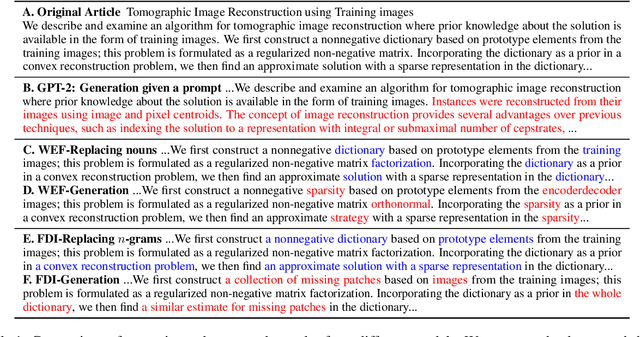



Abstract:Recent works in cyber deception study how to deter malicious intrusion by generating multiple fake versions of a critical document to impose costs on adversaries who need to identify the correct information. However, existing approaches are context-agnostic, resulting in sub-optimal and unvaried outputs. We propose a novel context-aware model, Fake Document Infilling (FDI), by converting the problem to a controllable mask-then-infill procedure. FDI masks important concepts of varied lengths in the document, then infills a realistic but fake alternative considering both the previous and future contexts. We conduct comprehensive evaluations on technical documents and news stories. Results show that FDI outperforms the baselines in generating highly believable fakes with moderate modification to protect critical information and deceive adversaries.
Scale Attention for Learning Deep Face Representation: A Study Against Visual Scale Variation
Sep 19, 2022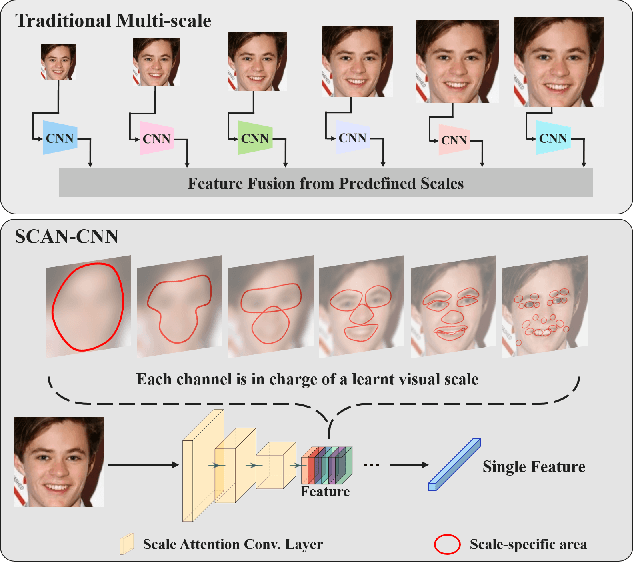

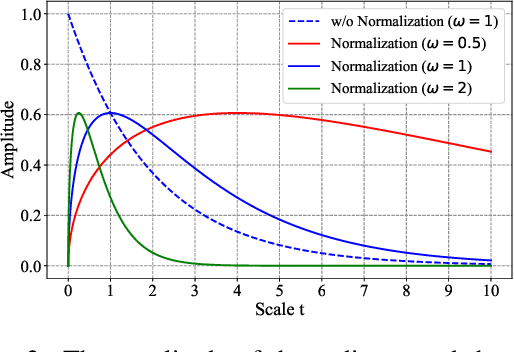
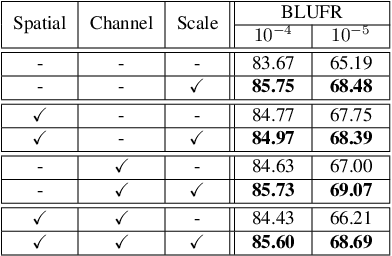
Abstract:Human face images usually appear with wide range of visual scales. The existing face representations pursue the bandwidth of handling scale variation via multi-scale scheme that assembles a finite series of predefined scales. Such multi-shot scheme brings inference burden, and the predefined scales inevitably have gap from real data. Instead, learning scale parameters from data, and using them for one-shot feature inference, is a decent solution. To this end, we reform the conv layer by resorting to the scale-space theory, and achieve two-fold facilities: 1) the conv layer learns a set of scales from real data distribution, each of which is fulfilled by a conv kernel; 2) the layer automatically highlights the feature at the proper channel and location corresponding to the input pattern scale and its presence. Then, we accomplish the hierarchical scale attention by stacking the reformed layers, building a novel style named SCale AttentioN Conv Neural Network (\textbf{SCAN-CNN}). We apply SCAN-CNN to the face recognition task and push the frontier of SOTA performance. The accuracy gain is more evident when the face images are blurry. Meanwhile, as a single-shot scheme, the inference is more efficient than multi-shot fusion. A set of tools are made to ensure the fast training of SCAN-CNN and zero increase of inference cost compared with the plain CNN.
 Add to Chrome
Add to Chrome Add to Firefox
Add to Firefox Add to Edge
Add to Edge